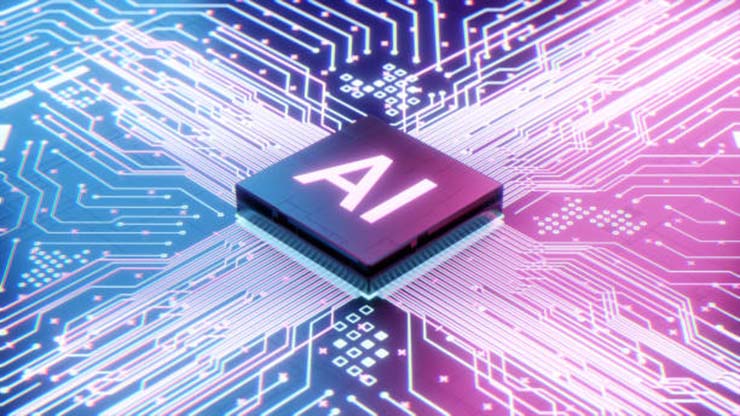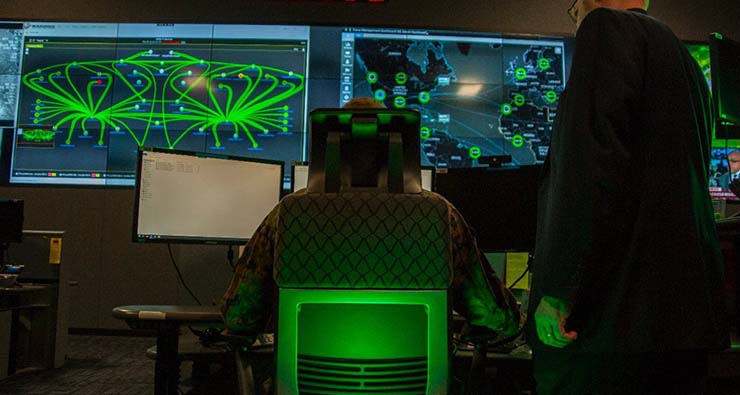
The 21st century has witnessed technological changes and disruption in all sectors of society, resulting in the creation of new yardsticks with distinct outcomes. With globalisation and the technology boom, a new term ‘geo-technologies’ has emerged which has become a major factor in the global power play. Possibly the most disruptive changes have been driven by Artificial Intelligence (AI), signaling the rise of a culture that has become a new standard for nations to assert their dominance.
AI in Modern Warfare
In modern warfare, a nation’s military strength is closely linked to its technological prowess and the exploitation by its techno-savvy warriors. The use of AI in the military is one such rapidly evolving field that allows for innovative, effective, and time-critical problem-solving, which is vital for future conflicts. AI could help enhance the multi-layer capabilities of military forces in handling a spectrum of undefined war situations or hostile environments. Artificial intelligence enables decision superiority and dominance in a dynamic information-clutter environment as well as in information-void situations. AI systems can provide valuable support to military operations by augmenting human decision-making and increasing the speed and accuracy of data analysis. Its manifestation will, however, lie in the quality of big data and a well institutionalised AI strategy for the defense forces.
Chinese Investments in AI
Any discussion on AI is incomplete without the appreciation and cognizance of Chinese investments in AI from the perspective of plans, doctrines, investments, and bottlenecks. The Chinese strategy on AI is to utilise this technology as a tool to leapfrog into geopolitical dominance, a once-in-a-millennium opportunity to reset the global world order and overthrow American dominance. In the words of Xi Jinping himself, “Under a situation of increasingly fierce military competition, only the innovators win.” Amongst senior leadership in the PLA, AI is seen as the final strategic frontier to inject a powerful dose of kinetic energy into an otherwise sluggish legacy of military development and as a tool to reduce Chinese vulnerability to the powerful West.
Potential Applications of AI in the Military
The complexities of the proliferation of sensors, communication networks, and accelerated information and data overload put limits on human cognitive capabilities. While machines will not replace human warriors, they will certainly enable them to declutter, filter, explore options, and exercise deeper analysis in a time-critical domain of the decision superiority loop. AI has thus become a critical part of modern warfare with its ability to handle massive amounts of military data more efficiently as compared to conventional systems. AI also facilitates the self-control, self-regulation, and self-actuation abilities of combat systems, using their inherent computing and decision-making capabilities.
Key AI-Military Applications
Autonomous Weapons: Autonomous weapons are weapons systems that can operate without human intervention. While controversial, some militaries are exploring the use of autonomous weapons for specific applications, such as drone swarms for reconnaissance or missile defense. The present optimisation is based on an optimal unmanned and manned system mix.
Decision Support: AI can help military leaders make better decisions by analysing large amounts of data and presenting insights in clear and actionable ways/options. For example, AI could help commanders decide where to prioritise resources in a complex battle space. Decision support systems can also help military planners identify potential threats and develop effective responses.
Logistics Optimisation: AI can analyse data on supply chain operations to optimise the delivery of supplies and equipment to troops in the field. This can help reduce waste, save costs, and improve readiness.
Predictive Maintenance: AI can analyse data from sensors and other sources to predict when equipment is likely to fail. This can help the military schedule maintenance before a failure occurs, reducing downtime and increasing readiness.
Cybersecurity: AI can be a powerful tool in detecting and responding to cyber threats. It can analyse large volumes of data and identify patterns that indicate a cyberattack is in progress. AI can also help develop effective countermeasures to cyberattacks.
AI Application in the Russia-Ukraine Conflict
The use of AI systems in the Russia-Ukraine conflict to monitor enemy movements on a large scale illustrates the rising significance of sophisticated open-source intelligence in future conflicts. Open-source application programming and off-the-shelf code interfaced with AI can now transliterate speech, identify faces, recognise colloquial military terms, and perform several other tasks with high accuracy. Some commercial companies have also modified their commercial AI-enabled voice transcription and translation technologies to intercept Russian communications and automatically highlight information of relevance to Ukrainian forces in a searchable text database at minimal cost and at speeds and scales that would require thousands of analysts.
AI in Countering Disinformation
AI models can be used to classify disinformation and help people analyse whether an image is fake and the authenticity of the source. AI-enabled filters can also act as shields from potential disinformation. The potential exists for mass deployment of AI-enabled truthful bots to constantly counter disinformation and misinformation spread.
AI Initiatives in the Indian Defence Forces
The Indian Government has made the development and adoption of AI a high-priority area. The MoD has taken several initiatives for the timely development and infusion of AI technologies, including the establishment of a task force and a Defence Artificial Intelligence Council (DAIC). A sum of over Rs 100 crore has been earmarked annually for AI-enabled projects, and a Defence AI Project Agency has been set up. Both the Defence Services and DRDO have taken up several initiatives in the field of AI.
The Art and Science of War
The enduring human dimension of the art of war is akin to the nature of war itself, while the technical dimension of the science of war is constantly evolving, much like the character of war. Technology superiority manifests itself in superior outcomes when warfighters are trained and educated to employ it effectively, with individual proficiency, collective mastery, and adaptive application. For the man-machine interface in warfare to be lethal, it must be complementary in its evolution and integrated into its construct.
The fusion of AI with war strategy can generate deep strategic insights for commanders and nations to reduce war losses through highly accurate real-time predictive inputs derived from high volume, dynamic, and unstructured data. However, technology alone is not enough. It must be integrated into doctrines, structures, and the development of leaders who can think strategically, critically, and creatively, and adapt to exploit their capabilities, interdependencies, and vulnerabilities. As Steve Jobs reminds us, technology is only a tool; it is people who ultimately drive success.

Technical, Ethical, and Operational Factors
Developing an effective AI strategy for the military requires careful consideration of a range of technical, ethical, and operational factors:
Ethics: The military must ensure that any AI applications align with its ethical principles and values. This includes ensuring that autonomous weapons are used in a manner consistent with international law.
Data Quality: AI relies on high-quality data and data integrity to make accurate predictions and decisions. The military must ensure that it has access to reliable and relevant data and that that data is properly labelled and annotated to enable effective AI training. The military must also ensure that the data is secure and protected against cyberattacks.
Human-Machine Interaction: The military must consider how humans and AI systems will interact in complex and dynamic environments. This includes ensuring that humans can understand and trust AI systems and that AI systems can effectively communicate with humans. The military must also ensure that AI systems are designed to complement human decision-making, rather than replace it. AI must form a critical component of professional military education for 21st century warriors.
Cybersecurity: AI systems are vulnerable to cyberattacks and must be protected against them. The military must develop robust cybersecurity measures to protect AI systems and the data they rely on. This includes ensuring that AI systems are designed with security in mind and that they are regularly tested for vulnerabilities.
Collaboration: Developing effective AI systems requires collaboration between the military, academia, industry, and other stakeholders. The military must engage with these stakeholders to ensure that it has access to the latest AI research and technology and that it can leverage the expertise of a wide range of partners. This includes collaborating with international partners to ensure that AI applications are consistent with international norms and standards.
Takeaways
In the words of Sundar Pichai, CEO Google, “AI is probably the most important thing humanity has ever worked on”. The use of AI in the defence forces offers significant opportunities to enhance military effectiveness and readiness.
However, developing an effective AI capability requires a doctrinal construct with a pragmatic roadmap and investment both in R&D and human resource development.
An AI strategy requires careful consideration of technical, ethical, and operational factors. Irrespective of the hype and tremendous leaps in AI battlespace, AI will have to overcome two major shortcomings presently, one – replicate “human intangibles” of war like courage, emotions and audacity, and two – “operate in a varied physical space dimensions”. Till then it will continue to be AI assisted warrior which will prevail with AI as a tool.
The military must look at addressing three aspects of AI induction: cultural, structural, and human resource empowerment, from a womb-to-tomb approach. Finally, the military must engage with all stakeholders to ensure that it has access to the latest AI research and technology and can leverage the expertise of a wide range of partners.
-The author is a PVSM, AVSM, VSM has had an illustrious career spanning nearly four decades. A distinguished Armoured Corps officer, he has served in various prestigious staff and command appointments including Commander Independent Armoured Brigade, ADG PP, GOC Armoured Division and GOC Strike 1. The officer retired as DG Mechanised Forces in December 2017 during which he was the architect to initiate process for reintroduction of Light Tank and Chairman on the study on C5ISR for Indian Army. Subsequently he was Consultant MoD/OFB from 2018 to 2020. The Officer is a reputed defence analyst, a motivational speaker and prolific writer on matters of military, defence technology and national security.The views expressed are personal and do not necessarily carry the views of Raksha Anirveda








